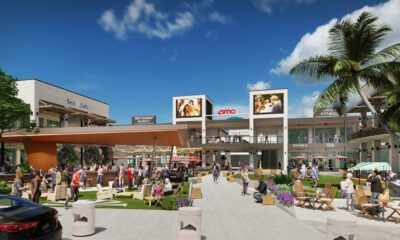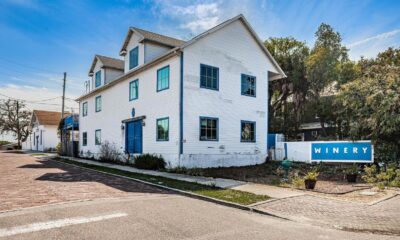Comm Voice
Dismantling barriers to inclusion: Rebuilding a community

Welcome to the Catalyst’s Community Voices platform. We’ve curated community leaders and thinkers from all parts of our great city to speak on issues that affect us all. Visit our Community Voices page for more details.
Last summer, the City of St Petersburg released a robust Request for Proposals (RFP) for the redevelopment of Tropicana Field’s 86 acres and, in my experience in reading RFPs, this one is impressive. Thirty-two pages long, it includes a site history section, twenty-one guiding principles and detailed requirements that prospective developers had to consider and include within their recently submitted proposals.
This project presents a unique and compelling opportunity for our community to come together and generate solutions for this 86-acre problem. This city can right a wrong in its history, where a community was misled, and an entire historic neighborhood was demolished to make way for a stadium and more than 6,000 parking spaces.
Far from an uncommon occurrence, it is a harm that has consistently been inflicted upon vulnerable communities, throughout history. What is unique in this situation is that St Pete is getting another opportunity to fulfill its past promises. The land has not been parceled out and sold off.
Our St Pete community now can go back to the drawing board and produce a much better plan than the one envisioned in the 1979 Gas Plant Redevelopment Plan.
The timing of this project is propitious. It comes at a time in our culture where inclusivity and equity are trending, where current events are pushing us all to reckon with our not-so-distant past. St Petersburg can lead the way in showing the nation what community-driven development looks like on a large scale.
I wrote my master’s thesis during my time at the USF School of Architecture and Community Design, published in 2019, entitled “Where Have All the Mangoes Gone?” which can be described as a personal exploration into the history of the Tropicana Field site through an urban design and community-focused lens. The project documents my journey of understanding into a context and history which were previously unfamiliar and became truly compelling to me. This history is an important one for all of us to know. It is an important conversation for all of us to have. While uncomfortable at times, we need to be genuine in our quest for solutions. One must occupy that uncomfortable space to arrive at a place of understanding.
For the Tropicana Field redevelopment to be successful, a community-driven process must be implemented and, fortunately, we have precedents to look to. One of the most compelling examples of community driven design is the 11th Street Bridge Park in Washington, D.C. Currently under construction, this project aims to stitch together two historically disparate communities divided by the Anacostia River. What makes this project unique is the process undertaken by the development team. They engaged with hundreds of community members and stakeholder groups to generate an Equitable Development Plan, filled with responsive community investments to help uplift the historically underserved African-American communities East of the river. It is one bridge amounting to three acres, yet their plan led by the non-profit organization “Building Bridges Across the River” includes community investments spanning across neighborhoods. These community investments include workforce development for pre-construction, construction and post-construction jobs, with an emphasis on meaningful long-term employment; support for Small Business Enterprise prioritizing Minority, Women and Veteran Business Enterprises; encouraging homeownership; and supporting and elevating local arts and culture.
These efforts aim to address the threat of gentrification the communities face due to the new development. To avoid displacement, communities must be prepared to receive the development and benefit from it. The partnerships established between the development team and community organizations led to a plan that the communities east of the river could feel ownership in. It was not a plan imposed upon them by an outside entity. They were engaged, listened to, and are seeing results.
This project presents many parallels to the condition St Petersburg finds itself in. We do not have a river dividing us, we have a highway and an 86-acre void. There is renewed hope, due to the changing political landscape, that the largely underused I-175 may be the first highway in Florida’s history to be removed. It is a perfect candidate for removal due to its oppressive role in the city’s fabric, as a barrier to movement, and a “white road through black bedrooms” lying directly upon the neighborhood previously known as Sugar Hill.
What happens when we get there? The development team selected to redevelop the Tropicana Field site will need to focus their energy not only on redeveloping 86 acres, but on forming a long-lasting partnership with surrounding communities. We already have a multitude of community organizations with brilliant minds working towards these goals, such as One Community with initiatives tackling equity in real-estate development, economic growth in South St Pete, accelerating business growth and building generational wealth, to name a few. The development team will need to identify and bring all these stakeholder groups together to work toward this ambitious goal. The team must be comprised of locals, who are invested in the project’s outcome and have a deep understanding of community needs, to participate in generating effective solutions to maximize community benefit and avoid displacement.
This development cannot become more of the same. This development needs to be special because we care about our local communities, and we can highlight our strength through our diversity. This development must celebrate our rich local African American culture; it must celebrate our humanity.
We are seeking equality through the pursuit of equity. In pursuing equity, we provide opportunity. The economic, social, and emotional harm inflicted on St Petersburg’s African-American community, by the demolition of its historic neighborhoods, must not only be explicitly acknowledged, but actively reversed. It is not enough to make these efforts in isolation, we need to address these problems holistically.
While ideas abound of what would work on the site, solutions must be framed and informed by local input and knowledge. This is the framework that will make the development belong here and create a sense of ownership within the community. We can all take part in this effort and when we do, this neighborhood will not only be a world class development, but it will be a beacon of inclusivity and equitable development for the rest of the country to look to.
Disclosure: I am member of Sugar Hill Community Partners team that submitted a response to the Tropicana Field RFP from the City of St. Petersburg, and the opinions above are my own. We selected Sugar Hill as our name to celebrate and honor the historic Sugar Hill neighborhood which was demolished to make way for the I-175 spur. My perspective seeks to underscore the importance of comprehensive and sustained community outreach throughout the planning process.








Charlie Guy
January 29, 2021at5:32 pm
Awaking very late last night, I decided to begin reading the Sugar Hill RFP…hoping to be overwhelmed with boring details & returning to sleep. Darn….no such luck! Having grown up in South Tampa & only living in Old Southeast since 2003, my 1st problem was that I did not know what a Sugar Hill was or if was a place…where is or was it. Google to the rescue! Top of the list was found the 9/14/18 Weekly Challenger’s very concise history & why it was still so very important to many Southside residents. Well, I am NOT finished yet reading it & am not yet ready to endorse it as I do want to read all the RFP’s. However,…so far so good…great name honoring a mistreated part of town, great pictures of what looks to be fun an exciting concept (I have been to San Antonio River Walk), but was most impressed by how many local folks from BOTH sides of the Bay were involved! A great read if you want to stay up late!